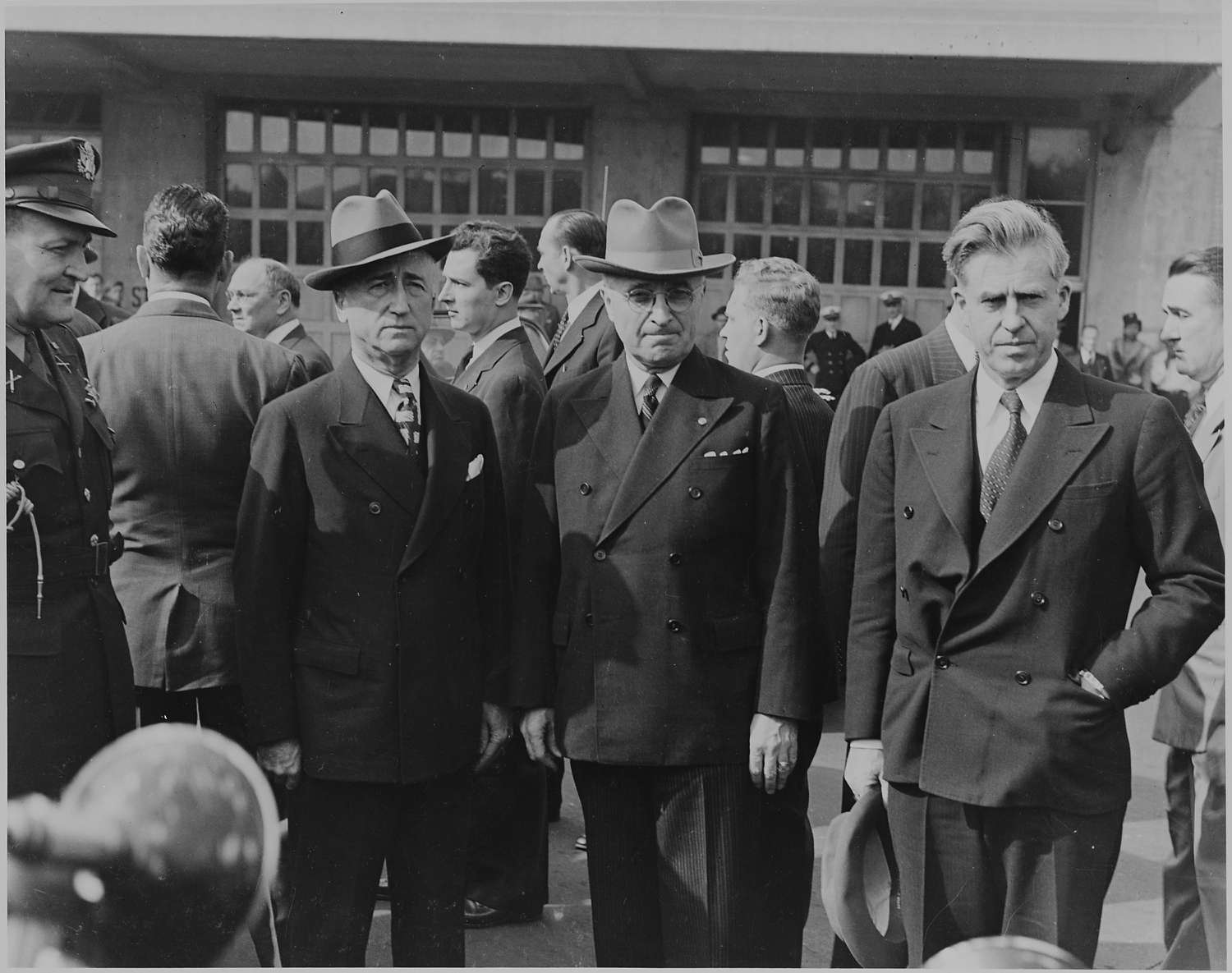U.S. Presidents Who Changed Vice Presidents: History and Impact
Multiple-term U.S. presidents have historically switched vice presidents for various strategic and political reasons, often impacting national policy directions. Here's what you need to know about this fascinating aspect of American political history.
The earliest example comes from Thomas Jefferson's presidency. Initially, Aaron Burr became vice president due to a quirk in the original Constitution - the runner-up in the presidential election became vice president. After the 12th Amendment in 1804, Jefferson chose George Clinton as his running mate to strengthen Northern support.

Truman, Byrnes, and Wallace at funeral
James Madison faced unique challenges when both his vice presidents (George Clinton and Elbridge Gerry) died in office, leaving the position vacant as no constitutional provision existed for replacement.
Franklin D. Roosevelt holds the record with three different vice presidents during his four terms:
- John Nance Garner (1933-1941)
- Henry Wallace (1941-1945)
- Harry Truman (1945)
The most impactful VP switch was Roosevelt's replacement of Wallace with Truman in 1944. When Roosevelt died shortly after his fourth term began, Truman's presidency marked significant shifts in both economic and foreign policy, particularly regarding Soviet relations.
Wallace later formed the Progressive Party and ran for president in 1948, advocating for:
- Civil rights reforms
- Opposition to the Truman Doctrine
- National health insurance
- Federal minimum wage
- Higher education scholarships
Nine vice presidents have become president due to death or resignation of the incumbent, highlighting the crucial importance of this selection. Despite John Nance Garner famously dismissing the vice presidency as "not worth a warm bucket of spit," the role has proven historically significant in shaping American policy and leadership.
Vice Presidential Requirements:
- Natural-born U.S. citizen
- Minimum age of 35
- U.S. resident for at least 14 years
- Same qualifications as presidential candidates
The vice president serves as both backup to the president and President of the Senate, only voting to break ties. This position, though often undervalued, has repeatedly proven crucial in American political history.